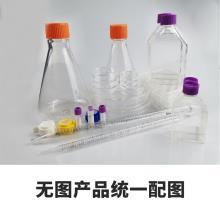Human FGF-basic (FGF-2/bFGF), AOF Recombinant Protein(试剂)_50 μg
市场价:¥4247会员价请登录
50 μg
RH307281
PHG6015
1kg单位:瓶
28-42品 牌:Gibco
0
产品详细信息
•Purity: >95% by SDS-PAGE and HPLC 靶标信息FGF2 (FGFb, fibroblast growth factor basic) belongs to the fibroblast growth factor (FGF) family, and interacts with high-affinity transmembrane receptors to influence cell proliferation and tissue neovascularization. FGF2 exists as five isoforms with distinct intracellular localizations and functions. The 18 kDa isoform is predominantly cytosolic and acts through cell surface receptors, whereas the 22, 22.5, 24 and 34 kDa isoforms are nuclear and may signal independent of transmembrane receptor pathways. In humans, the gene is located on the q arm of chromosome 4. FGF2 has been implicated in diverse biological processes, such as limb and nervous system development, wound healing, and tumor growth. The mRNA for FGF2 contains multiple polyadenylation sites, and is alternatively translated from non-AUG and AUG initiation codons, resulting in five different isoforms with distinct properties. The CUG-initiated isoforms are localized in the nucleus and are responsible for the intracrine effect, whereas, the AUG-initiated form is mostly cytosolic and is responsible for the paracrine and autocrine effects of this FGF. Diseases associated with FGF2 dysfunction include Kaposi Sarcoma and corneal neovascularization. |
江浙沪地区邮费 10 元,满 200 包邮 其它地区(不含港澳台)邮费 20 元,满 1000 包邮

